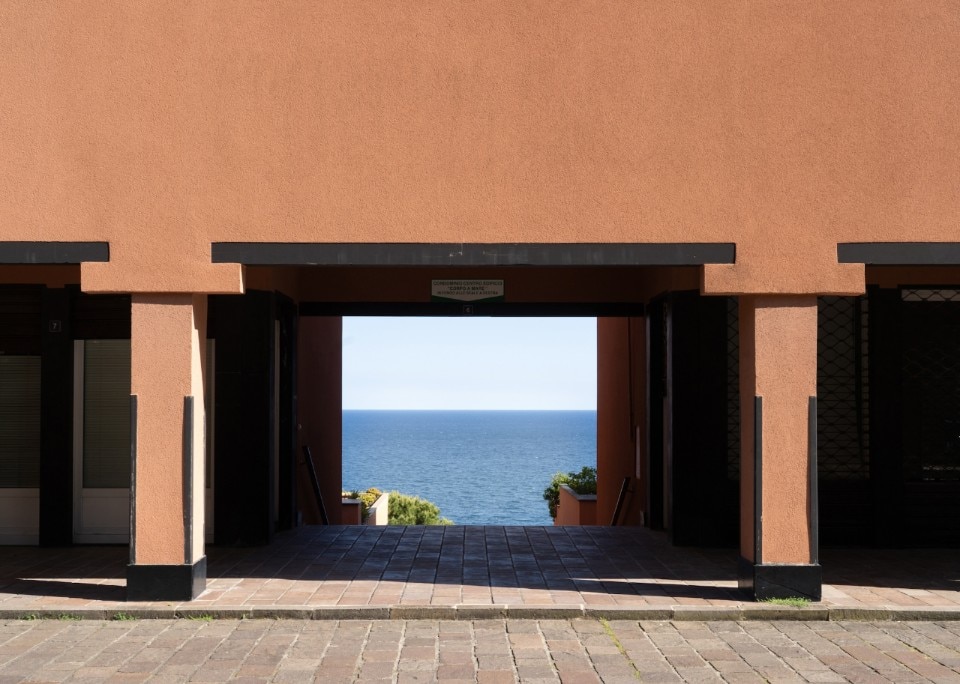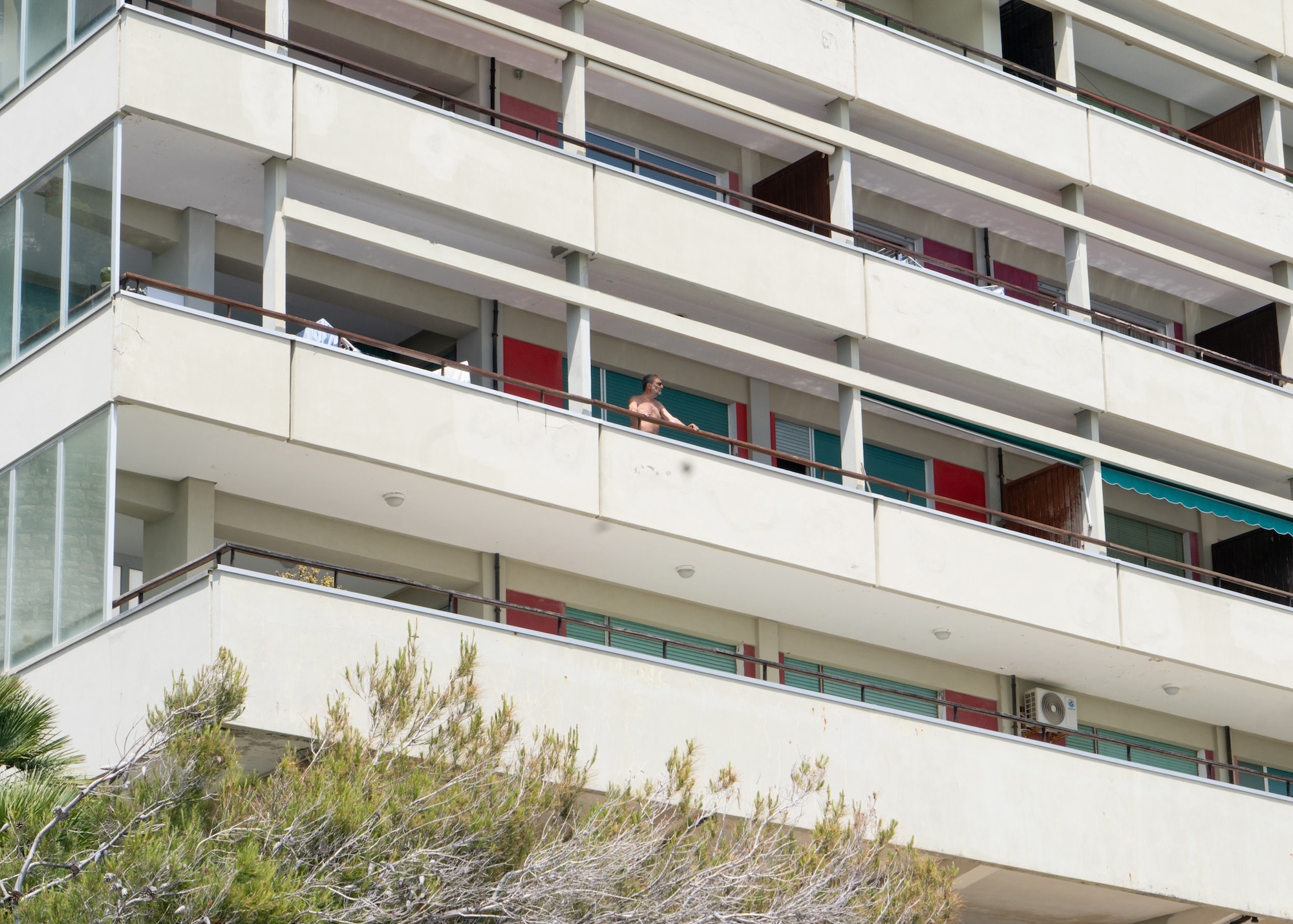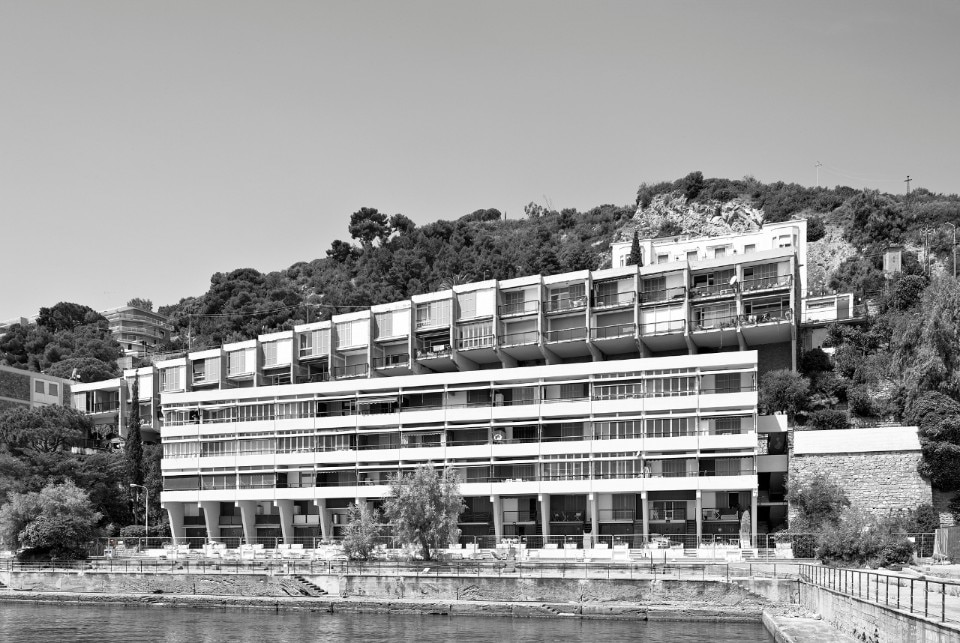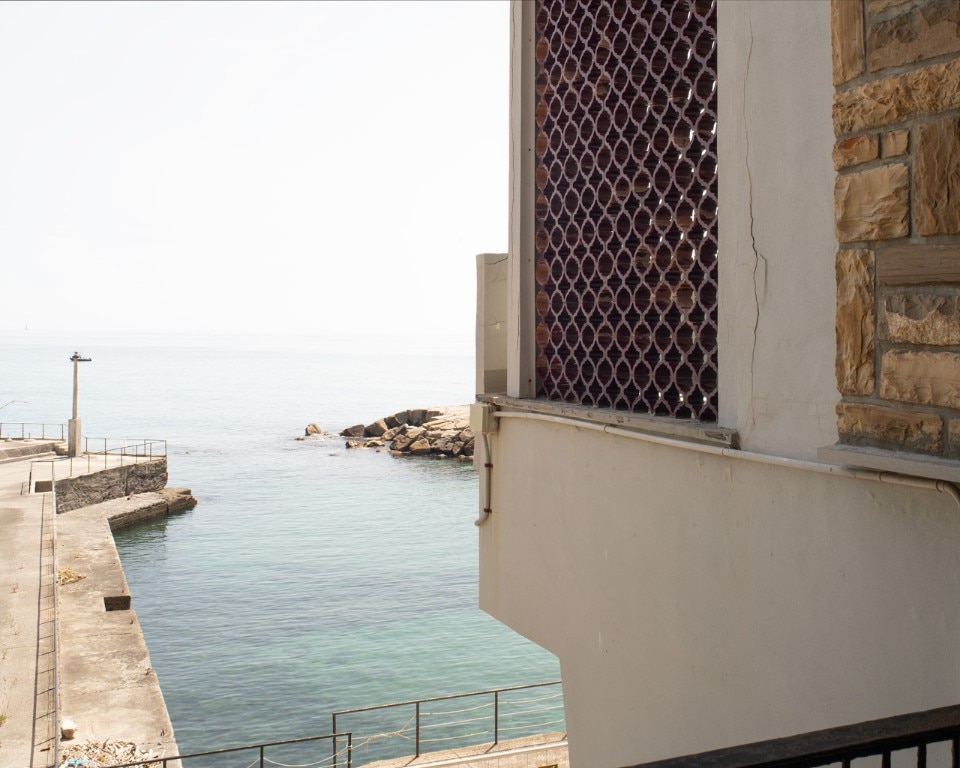While a good half of Italian architecture was busy getting kicked out of the Modern Movement, by the late 1950s the country was discovering a new idea of tourism and leisure—and a new kind of Modern for the holiday season.
The "ouster" was provoked by projects such as the Pineta di Arenzano, which sowed panic in the Modern debate by reintroducing local materials, rethinking of decorative detail, with echoes of historicity and genius loci. Not exactly Gropius in his Bauhaus years.
The new tourism and liberated time were those accessible to a larger part of the population, ignited by a new, sharp life-work separation that accompanied Italy in its now-legendary economic – and especially construction – boom. And it was here that a debate emerged, arguably hotter than the one about modernist orthodoxy.

From this era remain, surrounded today by scenes of blatant urban sprawl and hidden gems of what would later be dubbed cultured professionalism, some independent experiments such as Torre del Mare in Bergeggi by Mario Galvagni (same commissioning of the Sardinian Costa Paradiso), and hybrids such as the Piani d'Invrea complex by Ignazio Gardella and Marco Zanuso, or late-modern, almost brutalist spaceships, such as Capo Nero and Capo Pino, designed by Luigi Carlo Daneri on the cliffs between Sanremo and Ospedaletti.

The Piani d’Invrea – we are near Varazze, at the last stretch of Liguria’s western coast before one can say “Genoa” – are, in a way, a sequel to Arenzano, beginning with a 1958 masterplan. These are settlement for a different freed-up time, they are not born to function only in the summer in fact, but throughout the year, they are ideas of second home, of place for all weekends. Unsurprisingly, the project came with a new motorway exit and a service area with an Autogrill, the kind designed by Angelo Bianchetti.
Today the area is more densely packed and altered from the original concept, but the development was originally designed—one could say—through images, with a clear vision of the landscape these buildings would create. A landscape of dialogue above all: between constructions that were anything but vernacular and the entire ensemble of rocks, slopes, and Mediterranean vegetation that make up the Piani’s ecosystem.
Then, too, an urban landscape—more open to listening to the past of Italian cities, with arcades, stairways, terracotta, and shades of red. That’s where Gardella’s hand is most visible (as in Arenzano, and again in the 1980s with the Faculty of Architecture on the Castello hill in Genoa).
Zanuso, by contrast, surprises with an uncompromising modernity, designing buildings as clusters of cubic volumes cascading toward the cliffs and shoreline.

Even more uncompromising is Daneri’s modernism in Ospedaletti. A modernist with firm Le Corbusier faith, Daneri is no mannerist nonetheless: his “Serpentone”, the Forte Quezzi complex in Genoa, is the Plan Obus for Algiers caught digesting the Unité d'Habitation in Marseilles, it has the international breath we also find in Rio de Janeiro in Affonso Reidy's Pedregulho. Here, once by thesea, his settlements echo more the "habitat pour le plus grand nombre" of the postwar French CIAMs, even Paul Rudolph's megastructures somehow, rather than the Belle Époque Riviera or vernacular village styles.
The Capo Pino complex is another dense, rhythmic cascade, this time in exposed concrete, with duplex beach-level units, and uncompromised views as a top priority. The attention to shared spaces is high, with an openly artificial beach that is carefully oriented and proportioned at the same time. The same goes for nearby Capo Nero, where the building stretches out in a linear formation (enter the Serpentone again), an array of linear blocks joined by an elevated corridor (cue the Unité again), lined with large apartments featuring ribbon windows, united in a painterly pattern of green sunshades.
Here again, the driving force was not the profit motive that ravaged the surrounding landscape, but rather the quality of the experience, be it collective or rather a personal, direct experience of landscape, sea, and time for oneself.
The stories of Piani and Ospedaletti intersect with contemporary questions, and we encountered them through the projects of a festival, Abitare la Vacanza (“Living the Holiday”), which dove into these complexities without shying away from what’s uncomfortable or negative.
A photographic project, MiraMare, captured in the images by Gaia Cambiaggi and Emanuele Piccardo a landscape of profit, a coastal wilderness where the only “wild” thing left is the concrete.
Throughout the festival instead – curated by Piccardo together with Gloria Bovio and Andrea Canziani – the architectures spoke “in person” about both the problem (through their history, as in densified Invrea, or through stark contrast with neighbors, as in Daneri’s case) and a possible solution or proposal for the future.
These are, after all, housing complexes, not quick holiday getaways. Places for living, perhaps no longer for vacation. They can still play a role in today’s housing trends, offering – against the disoriented drift of contemporary living – what once made them unique: the high quality of their original vision.
Opening image: Ignazio Gardella at Piani d'Invrea, Varazze, Savona. Photo Emanuele Piccardo.
Abitare la Vacanza. Architetture per il tempo liberato was realized by Soprintendenza di Savona e Imperia, Comune di Varazze, Comune di Ospedaletti, Ordine Architetti Savona, plug_in and Dialoghi d’Arte.


















